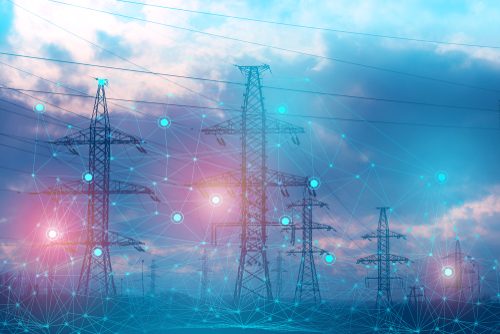New report examines benefits of expanding the transmission grid

Expanding and modernizing the transmission grid in the eastern United States will increase access to renewable energy, create jobs, lower electricity bills, and reduce carbon emissions, according to a new report from Americans for a Clean Energy Grid (ACEG).
The report, called “Consumer, Employment, and Environmental Benefits of Electricity Transmission Expansion in the Eastern United States,” finds that transmission overcomes a significant challenge in the U.S., which is that much of the renewable energy resources are often located in remote, rural regions, far from urban areas. According to the Wind Energy Foundation, the 15 states between the Rocky Mountains and the Mississippi River account for 88 percent of America’s wind potential and 56 percent of its large-scale solar photovoltaic potential. However, those states are home to only 30 percent of projected 2050 electricity use.
“Just as the Eisenhower interstate highway system unleashed U.S. manufacturing in the 20th Century, a strong macro grid will deliver massive economic and public health benefits for all Americans in the 21st Century,” Rob Gramlich, executive director of ACEG, said. “Removing policy roadblocks to building the macro grid would yield up to $7.8 trillion in private infrastructure investment, create over 6 million jobs, save consumers over $100 billion, and cut carbon pollution from electricity more than 80 percent. The macro grid is a win for American workers, consumers, and public health.”
An investment in the transmission grid will reduce electric sector carbon dioxide (CO2) emissions by 65 percent by 2035 and by over 95 percent by 2050. Further, it would create more than 6 million jobs, save consumers more than $100 billion overall, cut the typical household electricity bill more than $300 per year, and lead to a significant increase in wind and solar by 2050.
“We need a stronger transmission grid to deliver the world-class renewable resources that are currently stranded in rural areas to population centers,” report co-author and Grid Strategies Vice President Michael Goggin said. “Connecting rural and urban areas with transmission will also make the grid more reliable, create jobs, lower consumer electric bills by one third, and deliver healthier air for all.”
The study states that wind, solar, storage, and transmission play an essential and complementary role. Transmission and storage work together to balance the intermittent nature of wind and solar production, allowing renewable energy to deliver more than 80 percent of America’s electricity.
